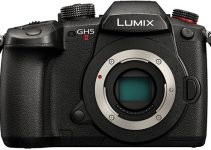Cinematic, more cinematic! That’s the war cry of most of the filmmakers out there. We all are well aware of the dreaded nightmare, the “Video Look”, the “Soap Opera effect”… Call it as you may, but we all know what we are talking about here.
It’s not an easy task to describe it, cinematographers too sometimes lack words to describe it, but we know for sure that even Tom Cruise can’t stand the thing! But how can we avoid those fluid, sharp and crystal clear fake looking shots? Indian filmmaker Sareesh Sudhakaran of Wolfcrow has some suggestion on the matter, let’s take a look.
We should first debunk a myth. Video look does not depend on the camera you’re shooting with. Or at least, it does not depend only on that. As Sareesh Sudhakaran points out, it is possible to create video-ish images with high-end cine cameras such as REDs or Cinealtas. There are however some small attentions that can get you a long way, we can sum up the main four:
#1 – Always Shoot Log
Dynamic range is one of the perks of cine cameras. The wider is your range, the more you can distance yourself from that video look. It would be better to try to shoot always with the most dynamic range your sensor is capable of, and to obtain that maximum range the better solution is to shoot in a flat profile, or, as it’s usually called, Log.
Each manufacturer has its own flavor of it, Sony has S-log, Fuji has F-log, Panasonic’s V-log and so on, you name it. This kind of files use logarithmic compression (hence the name) to fit more information about tonal range in the same shot, although it may seem the opposite since these images appear dull and flat. It is true that it may be more difficult grade a Log file, but you could, if your camera has it, use a profile in between log and the more contrasted Rec709.
#2 – Nail Skin Tones
In our everyday life, we see and we meet people all the time, so our eyes are particularly trained to recognize if something is off in the color rendition of someone’s skin. It’s true there are many variations, but we can immediately tell if that image has something off in that particular set of tones defined by human skin. Here is where the difference between cheaper and expensive cameras sticks out.
The most renowned cameras are excellent in handling the skin tone, the “video look” instead often does not have a correct exposure on skin, meaning the tones are off, often unevenly, sometimes towards the highlights and sometimes toward the shadows. And that exposure error gets you a tonal shift that is immediately recognizable. Try to expose always correctly the talent’s skin. A tool like a false color monitor or a vectorscope will be of great help.
#3 – The Shutter Speed
The good old cinema has a very distinguished look due to it being shot in 24p, and that implies a discrete amount of motion blur in the image. But not always you can get that framerate. You may need to shoot in 50 or 60p to get some slow motion or whatever other reason, it may be a car crash or an action scene. Every situation is different and some call for higher frame rates and higher shutter speeds.
Knowing that, you can choose wisely and select the most adequate framerate for your scene or project, but you should know that if you manage to stay in that sweet spot of 24p you will get the optimal amount of motion blur. Keep also VFX and graphics with a minimal amount of motion blur, it will help to merge better in the composition.
#4 – Sharpening
Older cameras, and also many studio cameras have a default sharpening in the picture profile. You can usually find it out in the pages of the menu relative at image quality. This tool can somehow be useful. Like if your shot is for some reason not exactly in focus you can reduce the effect thanks to sharpening.
What’s the catch though? Cine cameras do usually have huge sensors and wonderful bokeh, instead smaller video cameras have tiny sensors, so they are, by design, giving you an image with a huge part of it in focus due to it being a small sensor. So now you can see how eliminating the sharpening and using a bigger sensor camera can give your video a little more of a cinematic feeling.
At the end, however, its not about the elements we’ve seen per se. It’s the mix of everything that gives that look, so if you know how it works and you understand the way you can interact and change things, you can be able to get the best picture without worring to much of the video look in every situation.
[source: Wolfcrow]
Disclaimer: As an Amazon Associate partner and participant in B&H and Adorama Affiliate programmes, we earn a small comission from each purchase made through the affiliate links listed above at no additional cost to you.



